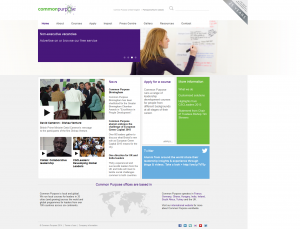Is Social Enterprise an Undisputed Good?
So, twenty years ago, community business was not well-known in England and it is interesting to see how the movement developed. The term “social enterprise” caught on, which suggests the enterprise model won out over the business model.
It seems hard to a community or social business; almost everyone says they’re in business when they’re actually a grant aided project. Maybe this is an improvement if projects run in a more business-like way. However, the criticism of the enterprise model in 1990s Scotland was it masked what community businesses were trying to do.
Grant-Aided Projects
Most social enterprises are in neighbourhoods where there is multiple deprivation. These neighbourhoods may not be able to support a business that provides the job opportunities a grant aided project can offer. The survivors are the projects that have understood the basic disciplines needed in the private sector and use them to find grants, loans or contracts. They need grants or loans or contracts because that is the way to bring some social infrastructure into such neighbourhoods. I support these projects but my concern is the likely result of loss of funding. Building the necessary capital assets and a market that allows them to be sustainable is a real challenge.
The voluntary-sector mindset is grant-orientated and so I wonder how effective social enterprises are in the medium to long-term? I know the amount of work that goes into establishing social enterprises and the ones that survive over 20 years build a capital asset base and a market. I’m also aware many fail, largely because they were unable to find a market and so were unsustainable.
Has the idea of social enterprise slipped its moorings?
Today anyone with social aims can declare themselves a social enterprise and pitch to funding bodies who are desperate to make grants or loans. You can receive grants and loans for a good idea, whether you have a market for the idea or not. By market I don’t mean an idea about who ideally you might sell to but an actual list of customers and prospects.
I have seen projects that are really small conventional businesses, masquerading as social enterprises to receive funding. They have social aims but no organisation other than the people who run it. Some projects lack both the customers they need to be a business and the community support they need to be a social enterprise. Their vision may be excellent but their execution leaves much to be desired.
The Self-Employment Route
Why not start out as self-employed? Because you get no money that way. Why not test an idea in the marketplace before making it a social enterprise? If your idea is such a good one, how else can you prove it? Receiving a grant or loan proves you know how to complete an application form; not viability as a business.
I can understand why an entrepreneur would not want the added complication of a committee, so why not set up a conventional business and find a market? Prove the idea works before you apply for grants. Is that really too much to ask? After all if you can’t show its viable, why put it into the marketplace at all? For a good idea the problem is lack of business management skills and not viability.
Once an idea works, it can be re-launched as a community business if the owner is so minded. Many successful businesses start out as enterprises where the entrepreneur takes the risk; the time to decide it is a community business is when it is ready to become a company.
Who Takes the Risk?
Yes, I’m saying the entrepreneur should take the risk, show their idea is viable and then take it into the third sector. At that point they can apply for funding to expand a viable business, increase the workforce, appoint apprentices, etc. People who are not entrepreneurs run the grant and loan making industry. Their goal is to meet outputs and this is not usually compatible with business aims.
Community development workers should take the marketplace much more seriously and their focus should be on helping small businesses become viable and where appropriate choose the social enterprise route. It may take time and risk individual’s assets but it can build sound foundations for local regeneration. What do you think?
 This is my fourth website review of some community development related websites. If you haven’t read the others, check out these previous posts to catch up:
This is my fourth website review of some community development related websites. If you haven’t read the others, check out these previous posts to catch up: